The 18 Shakti Peethas are revered temples dedicated to the goddess Shaktis, the embodiment of divine feminine energy in Hinduism. 18 Shakti Peethas According to legend, these sacred sites mark the locations where parts of the goddess Sati’s body fell as Lord Shiva carried her remains across the cosmos. Each 18 Shakti Peethas has a unique significance and is associated with a specific body part of Sati. These holy places are not only centers of profound spiritual importance but also hold immense cultural and historical value, drawing millions of devotees seeking blessings and spiritual enlightenment.
1. Kamakhya Devi, Assam
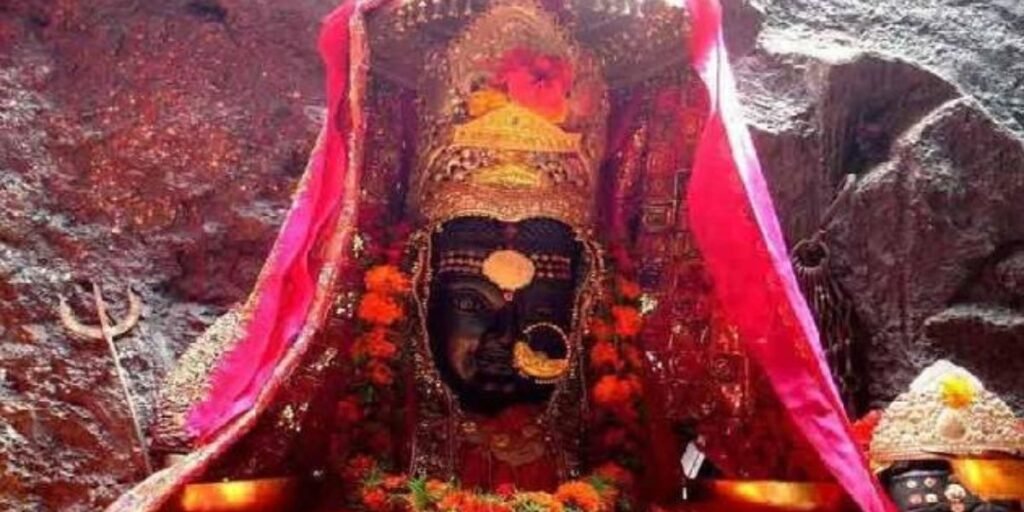
The Kamakhya Devi Temple in Guwahati, Assam, is one of the most revered Shakti Peethas in India. Dedicated to the goddess Kamakhya, it is believed to be the site where Sati’s yoni (womb) fell. This temple, symbolizing fertility and desire, attracts thousands of devotees during the annual Ambubachi Mela, which celebrates the goddess’s menstruation. The temple’s architecture is notable for its unique blend of Hindu and tantric styles. Surrounded by lush greenery and the Nilachal Hills, Kamakhya Devi Temple is a spiritual haven and a significant cultural landmark in Assam.
| Aspect | Details |
| Location | Guwahati, Assam |
| Significance | Site where Sati’s yoni (womb) fell |
| Festival | Ambubachi Mela |
| Architectural Style | Blend of Hindu and tantric styles |
| Surroundings | Nilachal Hills, lush greenery |
2. Vishalakshi, Varanasi
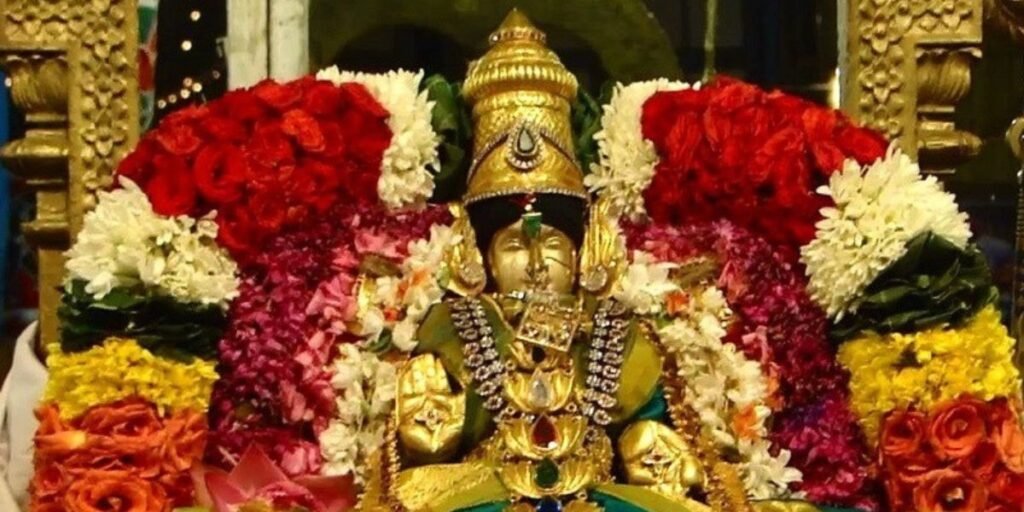
The Vishalakshi Temple in Varanasi, Uttar Pradesh, is one of the 18 Shakti Peethas and is revered for its spiritual significance. It is believed to be the site where Sati’s earring fell. The goddess Vishalakshi, meaning “wide-eyed,” is worshipped here as a powerful manifestation of Shakti. Situated near the famous Kashi Vishwanath Temple, it is a major pilgrimage destination. The temple’s serene atmosphere and historic relevance make it a significant cultural and religious landmark in the sacred city of Varanasi.
| Aspect | Details |
| Location | Varanasi, Uttar Pradesh |
| Significance | Site where Sati’s earring fell |
| Deity | Goddess Vishalakshi (wide-eyed) |
| Proximity | Near Kashi Vishwanath Temple |
| Cultural Importance | Major pilgrimage destination |
3. Jwala Devi, Himachal Pradesh

The Jwala Devi Temple in Kangra, Himachal Pradesh, is renowned for its eternal flame that burns without any fuel, symbolizing the goddess’s divine power. It is believed to mark the location where Sati’s tongue fell. This miraculous flame has been burning since ancient times, drawing countless devotees seeking blessings. The temple’s serene surroundings and spiritual ambiance make it a significant pilgrimage site. Jwala Devi is worshipped as the goddess of light and fire, and the temple’s unique phenomenon attracts both religious followers and curious visitors from around the world.
| Aspect | Details |
| Location | Kangra, Himachal Pradesh |
| Significance | Site where Sati’s tongue fell |
| Unique Feature | Eternal flame that burns without fuel |
| Deity | Goddess of light and fire |
| Attraction | Spiritual ambiance and miraculous flame |
4. Brajeshwari Devi, Himachal Pradesh

The Brajeshwari Devi Temple in Kangra, Himachal Pradesh, is revered as one of the 18 Shakti Peethas. It is believed to be the site where Sati’s left breast fell. This ancient temple is renowned for its intricate architecture and spiritual significance. Devotees visit to seek blessings for prosperity and well-being. The temple’s vibrant festivals, such as Navratri, attract pilgrims from far and wide. Surrounded by the picturesque Kangra Valley, the Brajeshwari Devi Temple offers a serene atmosphere for prayer and contemplation.
| Aspect | Details |
| Location | Kangra, Himachal Pradesh |
| Significance | Site where Sati’s left breast fell |
| Festival | Navratri |
| Architecture | Intricate and ancient |
| Surroundings | Kangra Valley, picturesque views |
5. Chamundeshwari Devi, Karnataka
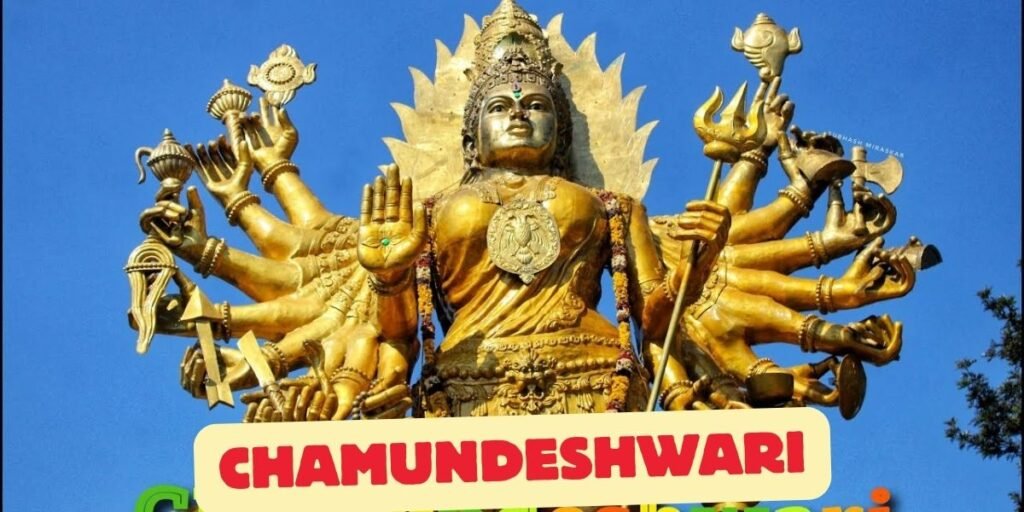
Chamundeshwari Devi Temple, located atop Chamundi Hills in Karnataka, India, is a revered Hindu pilgrimage site dedicated to Goddess Chamundeshwari, an incarnation of Goddess Durga. Built in the 12th century by the Hoysala rulers, the temple boasts a blend of Dravidian and Hoysala architectural styles. The sanctum sanctorum houses the idol of Chamundeshwari adorned with jewelry and flowers, attracting devotees seeking blessings for courage and prosperity. The temple is particularly vibrant during Navaratri, when festivities include colorful rituals and cultural performances. Visitors can enjoy panoramic views of Mysuru city and explore nearby attractions such as the Nandi Statue and Mysuru Palace.
| Location | Chamundi Hills, Karnataka, India |
| Built by | Hoysala rulers in the 12th century |
| Dedicated to | Goddess Chamundeshwari, incarnation of Goddess Durga |
| Architectural Style | Dravidian and Hoysala |
| Famous for | Navaratri celebrations and panoramic views of Mysuru city |
6. Kaalighat Kali, West Bengal

Kaalighat Kali Temple in Kolkata, West Bengal, is one of the oldest and most revered pilgrimage sites dedicated to Goddess Kali. Situated along the banks of the Hooghly River, this temple dates back to the 18th century and is renowned for its spiritual significance and architectural splendor. Devotees flock here to seek blessings for strength and protection from Goddess Kali, often depicted with a fierce yet benevolent demeanor. The temple precincts buzz with activity during Kali Puja, a major festival celebrated with fervor and devotion.
| Location | Kolkata, West Bengal, India |
| Built in | 18th century |
| Dedicated to | Goddess Kali |
| Architectural Style | Traditional Bengali temple architecture |
| Famous for | Kali Puja festival and spiritual significance |
7. Kamakhya Temple, Tripura
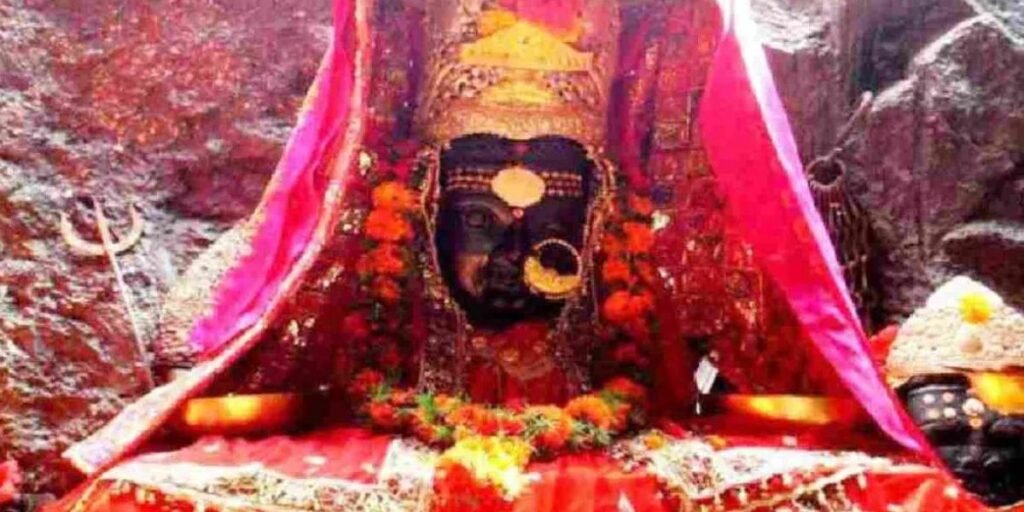
Kamakhya Temple in Tripura, India, is a significant Hindu pilgrimage site dedicated to Goddess Kamakhya, also known as Tripura Sundari. Situated atop the Nilachal Hill in Guwahati, Assam, this ancient temple dates back to the 8th century and is revered for its mystical aura and Tantric rituals. The temple complex comprises several shrines and sanctuaries dedicated to various forms of Goddess Kamakhya. Pilgrims visit to seek blessings for fertility, prosperity, and spiritual enlightenment, particularly during the annual Ambubachi Mela, a festival celebrating the Goddess’s menstruation cycle.
| Location | Guwahati, Assam, India |
| Built in | 8th century |
| Dedicated to | Goddess Kamakhya, Tripura Sundari |
| Architectural Style | Assamese temple architecture |
| Famous for | Ambubachi Mela festival and Tantric rituals |
8. Mahalakshmi Temple, Maharashtra
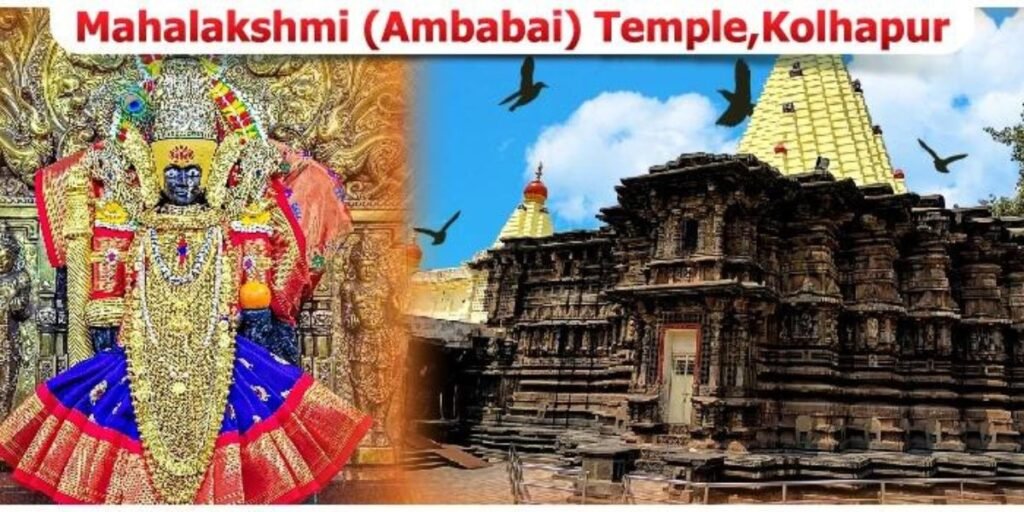
Mahalakshmi Temple in Kolhapur, Maharashtra, is a prominent Hindu temple dedicated to Goddess Mahalakshmi, the consort of Lord Vishnu. Believed to have been originally built in the 7th century, the current structure dates back to the 18th century, showcasing the Chalukya and Yadava architectural styles. The temple is renowned for its black stone idol of Goddess Mahalakshmi adorned with gold jewelry, attracting devotees seeking wealth and prosperity. The annual festival of Navaratri is celebrated with grandeur, drawing pilgrims and tourists to witness the vibrant cultural festivities.
| Location | Kolhapur, Maharashtra, India |
| Built in | 7th century (original), rebuilt in the 18th century |
| Dedicated to | Goddess Mahalakshmi |
| Architectural Style | Chalukya and Yadava |
| Famous for | Navaratri festival and the idol of Goddess Mahalakshmi |
9. Mahakali Temple, Gujarat
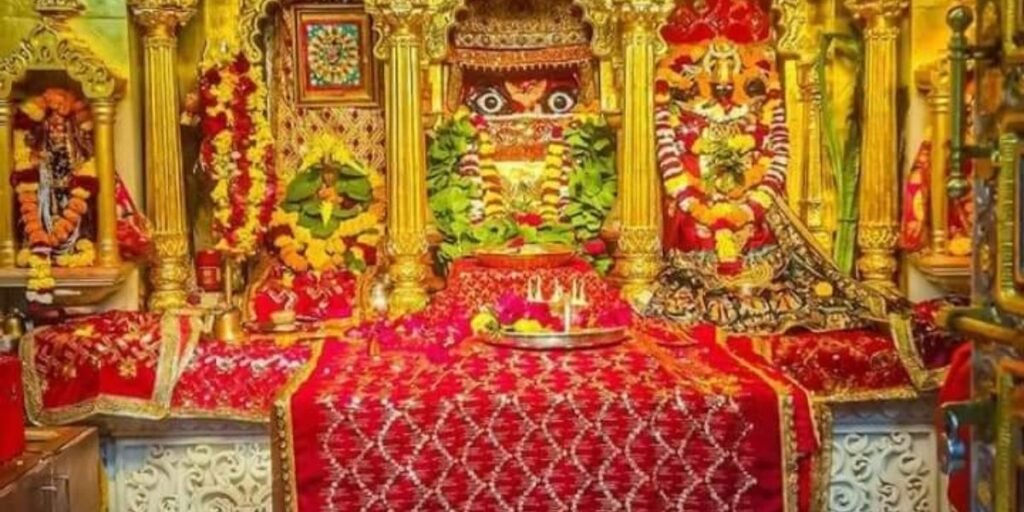
Mahakali Temple in Pavagadh, Gujarat, is a revered Hindu pilgrimage site dedicated to Goddess Mahakali, an incarnation of Goddess Durga. Perched atop the Pavagadh Hill, this ancient temple dates back to the 10th century and is known for its architectural grandeur and religious significance. The temple attracts devotees seeking blessings for protection and strength. The Navaratri festival sees a surge of pilgrims who undertake the arduous climb to pay homage to the goddess. The temple offers panoramic views of the surrounding landscapes, adding to its allure as a spiritual destination.
| Location | Pavagadh, Gujarat, India |
| Built in | 10th century |
| Dedicated to | Goddess Mahakali |
| Architectural Style | Hindu temple architecture |
| Famous for | Navaratri festival and panoramic views |
10. Tara Tarini, Odisha
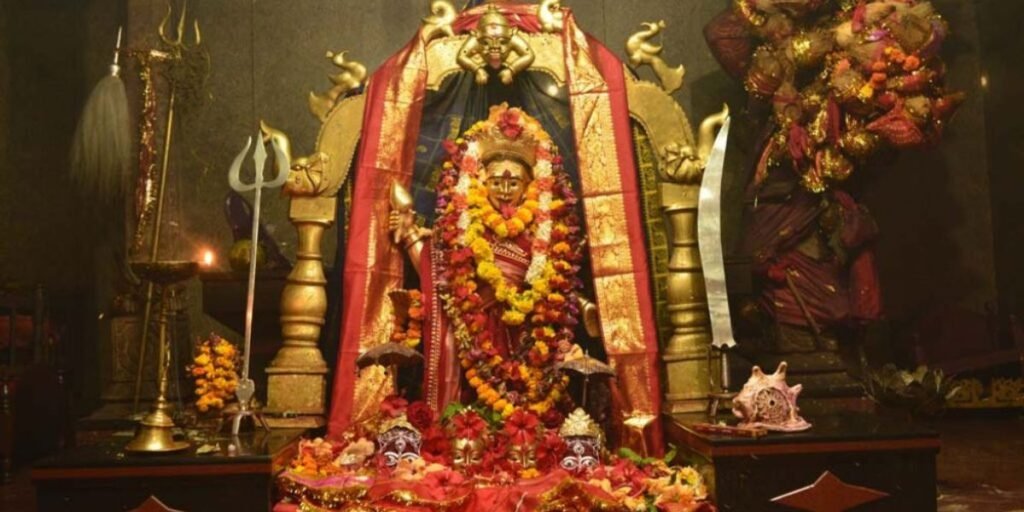
Tara Tarini Temple in Ganjam, Odisha, is a significant Hindu pilgrimage site dedicated to the twin goddesses Tara and Tarini. Situated atop the Kumari hills near the Rushikulya River, this ancient temple is believed to date back to the medieval period and holds deep spiritual importance. The goddesses are revered as manifestations of Adi Shakti, embodying the feminine power. Pilgrims flock here to seek blessings for fertility, prosperity, and marital harmony. The temple offers breathtaking views of the surrounding countryside, making it not only a place of worship but also a picturesque destination for tourists.
| Location | Ganjam, Odisha, India |
| Believed to be built | Medieval period |
| Dedicated to | Goddesses Tara and Tarini |
| Architectural Style | Traditional Odia temple architecture |
| Famous for | Spiritual significance and scenic views |
11. Naina Devi, Himachal Pradesh
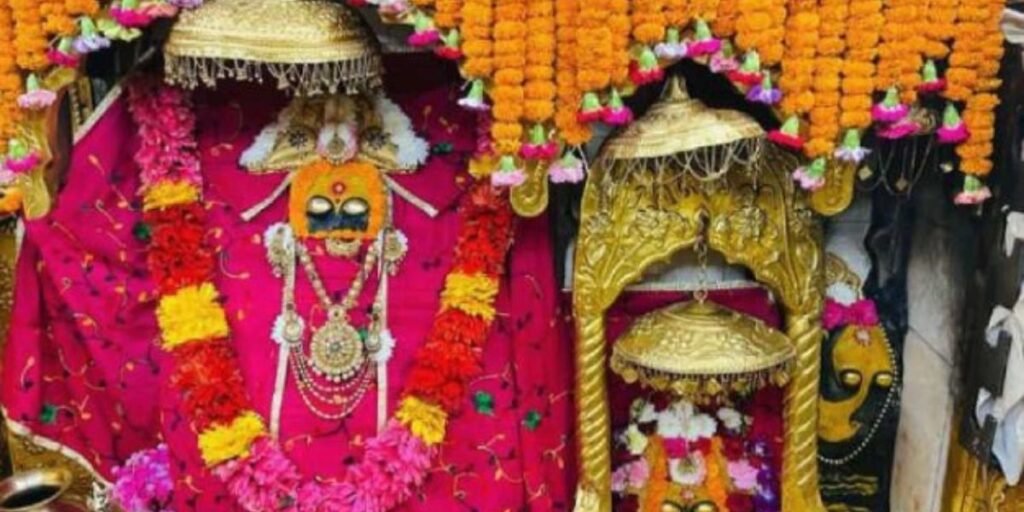
Naina Devi Temple in Himachal Pradesh is a renowned Hindu pilgrimage site dedicated to Goddess Naina Devi, also known as Mahishasuramardini. Perched atop Naina Hill overlooking the picturesque Nainital Lake, this temple is believed to fulfill wishes of devotees who visit with deep faith. The temple complex includes various shrines and offers panoramic views of the surrounding Himalayan ranges. The Nanda Ashtami fair, held during Chaitra (March-April), attracts thousands of pilgrims who gather to seek blessings and participate in religious rituals.
| Location | Naina Devi, Himachal Pradesh, India |
| Built in | Ancient times, renovated in recent centuries |
| Dedicated to | Goddess Naina Devi (Mahishasuramardini) |
| Architectural Style | Traditional Himachali temple architecture |
| Famous for | Nanda Ashtami fair and scenic views |
12. Chhinnamasta, Jharkhand
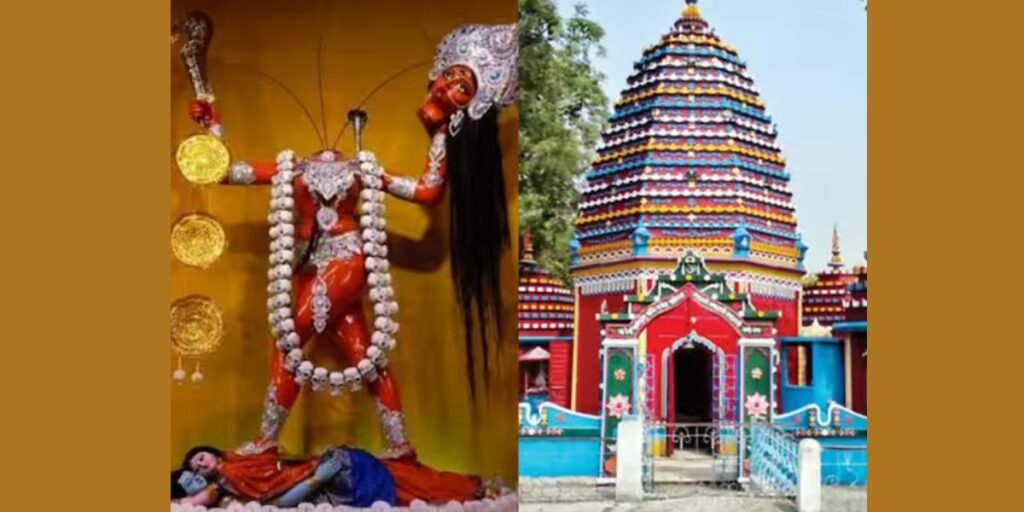
Chhinnamasta Temple in Rajrappa, Jharkhand, is a revered Hindu pilgrimage site dedicated to Goddess Chhinnamasta, the goddess of self-sacrifice and transformation. Situated near the confluence of the Damodar and Bhairavi rivers, this ancient temple attracts devotees seeking spiritual fulfillment and blessings for courage and inner strength. The goddess is depicted as a severed-headed deity holding her own decapitated head in one hand and standing on a copulating couple. The temple complex is surrounded by natural beauty, offering a serene atmosphere for meditation and prayer.
| Location | Rajrappa, Jharkhand, India |
| Built in | Ancient times |
| Dedicated to | Goddess Chhinnamasta |
| Architectural Style | Traditional temple architecture |
| Famous for | Spiritual significance and unique depiction of the goddess |
13. Dakshineswar Kali, West Bengal
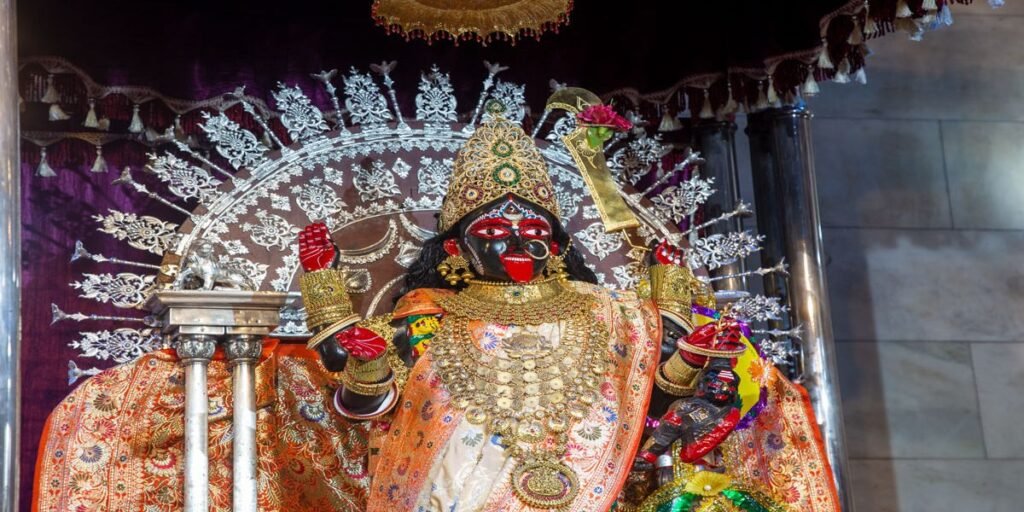
Dakshineswar Kali Temple is a renowned Hindu temple located in West Bengal, India. Established in 1855 by Rani Rashmoni, the temple is dedicated to Goddess Kali. It is an architectural marvel built in the traditional Nava-Ratna style and spans 25 acres along the Hooghly River. The temple complex includes twelve Shiva temples, a Radha-Krishna temple, and other shrines. Known for its association with the saint Sri Ramakrishna Paramahamsa, the temple attracts millions of devotees annually, especially during festivals like Kali Puja and Durga Puja.
| Feature | Description |
| Location | West Bengal, India |
| Established | 1855 by Rani Rashmoni |
| Dedicated to | Goddess Kali |
| Architectural Style | Nava-Ratna |
| Complex Area | 25 acres |
| Key Associations | Sri Ramakrishna Paramahamsa |
| Notable Festivals | Kali Puja, Durga Puja |
| Additional Shrines | Twelve Shiva temples, Radha-Krishna temple |
14. Manasa Devi, Uttarakhand
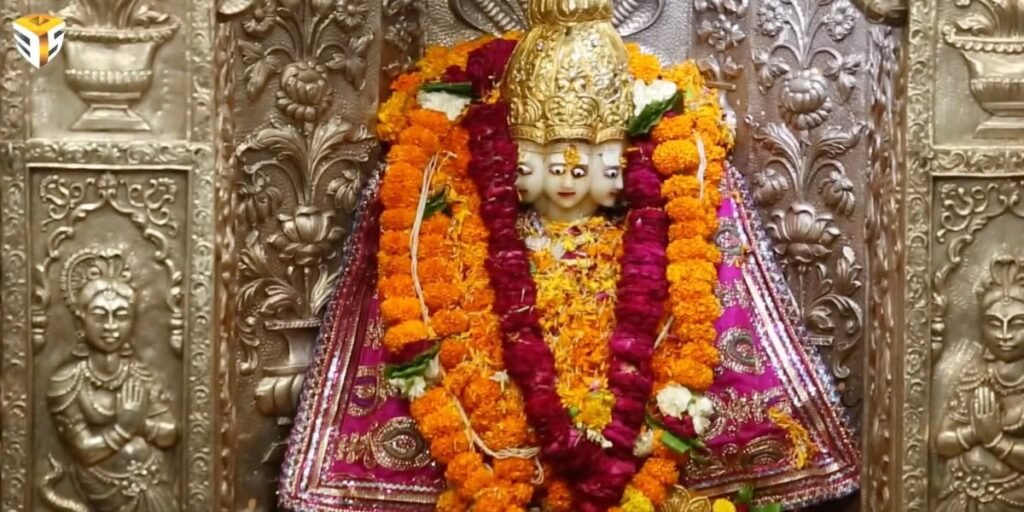
Manasa Devi Temple is a revered Hindu shrine located in Haridwar, Uttarakhand. Perched atop the Bilwa Parvat on the Shivalik Hills, the temple is dedicated to Goddess Manasa Devi, who is believed to fulfill the wishes of her devotees. Pilgrims can reach the temple either by a trek or via a cable car ride. The temple offers panoramic views of the Ganges River and the surrounding landscape, making it a popular pilgrimage and tourist destination.
| Feature | Description |
| Location | Haridwar, Uttarakhand |
| Situated on | Bilwa Parvat, Shivalik Hills |
| Dedicated to | Goddess Manasa Devi |
| Accessibility | Trekking, Cable Car |
| Key Attraction | Panoramic views of the Ganges River |
| Notable Festivals | Navratri, Diwali |
| Established | Ancient times |
| Main Deity | Manasa Devi |
15. Vishalakshi Temple, Tamil Nadu
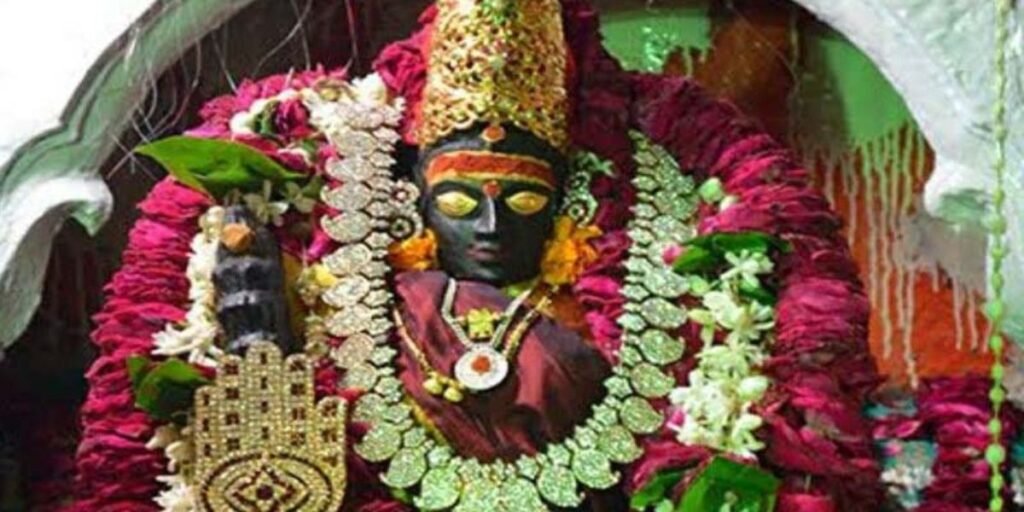
Vishalakshi Temple is a prominent Hindu temple located in Kanchipuram, Tamil Nadu. Dedicated to Goddess Vishalakshi, a form of Parvati, the temple is a significant place of worship and pilgrimage. The architecture reflects traditional Dravidian styles, featuring intricate carvings and a towering gopuram (gateway). The temple is particularly vibrant during festivals like Navratri, attracting numerous devotees who come to seek blessings and partake in the elaborate rituals and celebrations.
| Feature | Description |
| Location | Kanchipuram, Tamil Nadu |
| Dedicated to | Goddess Vishalakshi (Parvati) |
| Architectural Style | Dravidian |
| Key Attraction | Intricate carvings, towering gopuram |
| Notable Festivals | Navratri, Pongal |
| Established | Ancient times |
| Main Deity | Vishalakshi |
| Pilgrimage Significance | High |
16. Yogmaya, Delhi
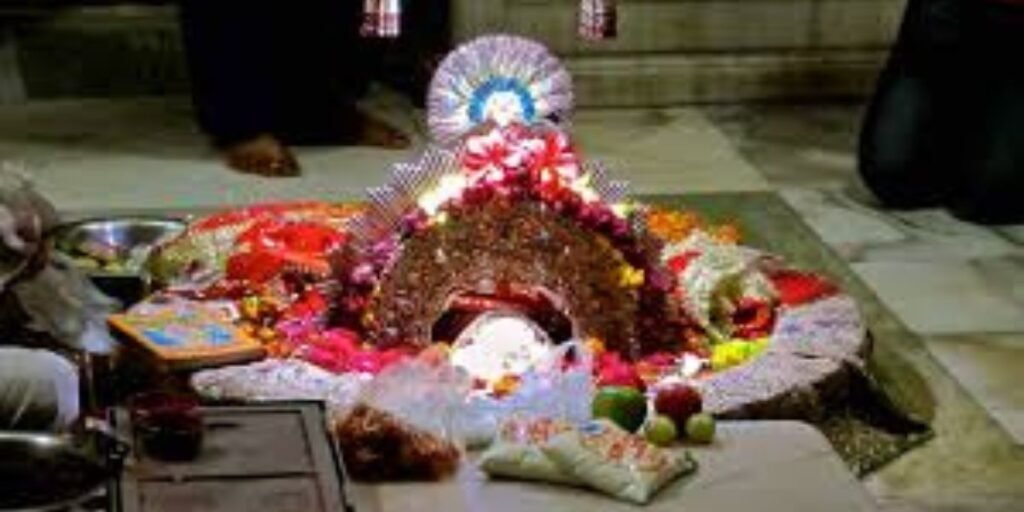
Yogmaya Temple is an ancient Hindu temple located in Mehrauli, Delhi. It is dedicated to Goddess Yogmaya, believed to be a reincarnation of Goddess Parvati and the sister of Lord Krishna. The temple, dating back to the Mahabharata era, is a significant place of worship and historical importance. The architecture features traditional North Indian temple designs, with a sanctum housing the idol of Yogmaya. The temple is especially crowded during the festival of Phool Walon Ki Sair, celebrating communal harmony.
| Feature | Description |
| Location | Mehrauli, Delhi |
| Dedicated to | Goddess Yogmaya |
| Historical Significance | Dates back to Mahabharata era |
| Architectural Style | North Indian |
| Main Festival | Phool Walon Ki Sair |
| Main Deity | Yogmaya |
| Cultural Importance | High |
| Pilgrimage Significance | Significant |
17. Sharda Peeth, Pakistan
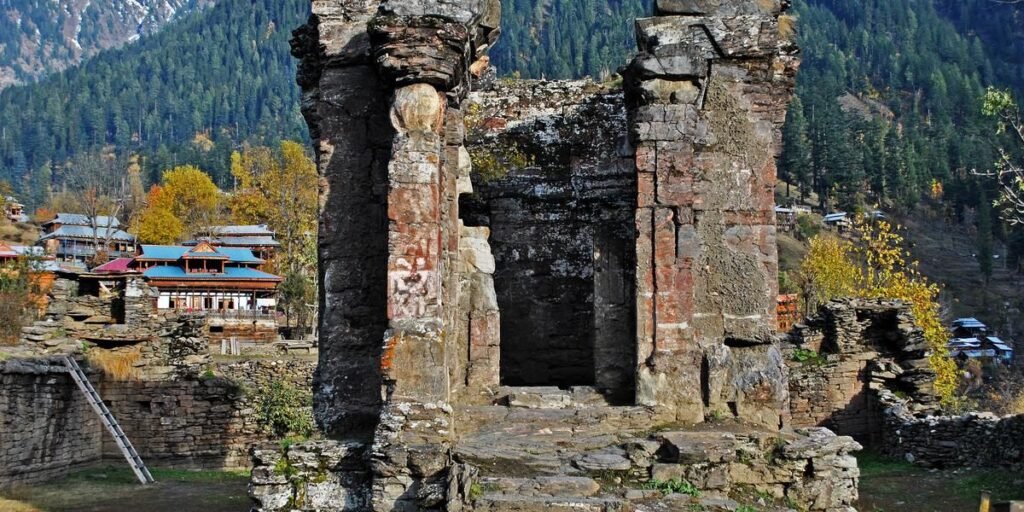
Sharda Peeth is an ancient Hindu temple and one of the 18 Maha Shakti Peethas, located in the Neelum Valley of Pakistan-administered Kashmir. Dedicated to the goddess Saraswati, the temple was historically a major center of learning and scholarship, known for its ancient library and as a site for religious pilgrimage. The ruins reflect its architectural grandeur and cultural significance. It is a revered site for Hindus, attracting pilgrims and scholars alike.
| Feature | Description |
| Location | Neelum Valley, Pakistan-administered Kashmir |
| Dedicated to | Goddess Saraswati |
| Historical Significance | Major center of learning and scholarship |
| Architectural Style | Ancient Hindu architecture |
| Main Deity | Saraswati |
| Notable for | Ancient library, cultural heritage |
| Pilgrimage Significance | High |
| Current Status | Ruins |
18. Amarnath, Jammu and Kashmir

Amarnath Temple is a revered Hindu shrine located in the Himalayas of Jammu and Kashmir. Dedicated to Lord Shiva, the temple is famous for its naturally forming ice lingam, which symbolizes Shiva. Pilgrims undertake the arduous Amarnath Yatra to visit the cave temple, which is accessible only during the summer months. The journey is considered highly sacred and is marked by breathtaking mountain scenery and profound spiritual significance.
| Feature | Description |
| Location | Jammu and Kashmir, India |
| Dedicated to | Lord Shiva |
| Key Attraction | Naturally forming ice lingam |
| Yatra Season | Summer months |
| Pilgrimage Significance | High |
| Accessibility | Trekking |
| Notable Festival | Amarnath Yatra |
| Spiritual Importance | Significant |
Conclusion
The 18 Shakti Peethas are not just religious sites but also hold great cultural and historical significance. Each temple has its unique story and attributes, making them vital centers of worship and spirituality. These sacred places continue to inspire devotion and reverence among millions of devotees, underscoring the enduring legacy of the divine feminine in Hinduism.
Read Our More Blogs:-



